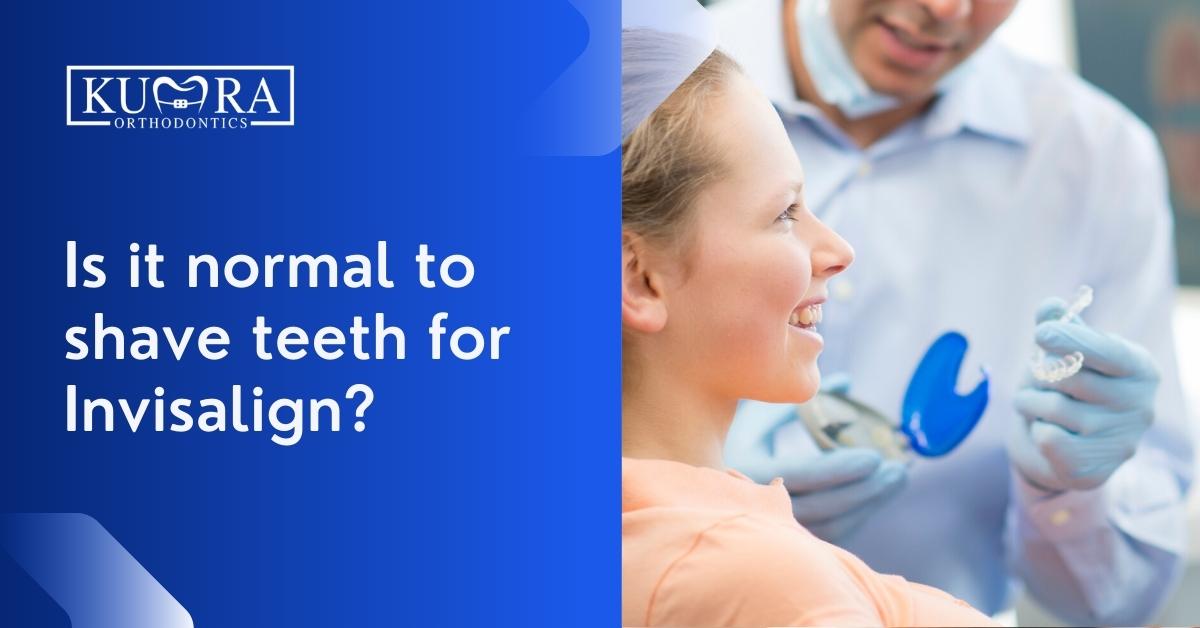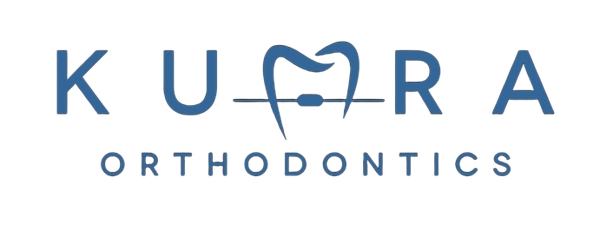Shaving teeth or filing them down in preparation for Invisalign treatment can alleviate crowding. Many individuals seek treatment with clear aligner trays as an alternative to conventional braces, like Invisalign. It is a well-liked choice since it provides a technique to fix crooked teeth while minimizing discomfort and the impact on the patient’s appearance.
The subject of whether or not the teeth will need to be filed down to allow space for tooth alignment is one that we get asked very frequently in our office. In a nutshell, it is rather common, and, provided that it is done appropriately, it poses only minor hazards.
You may be a candidate for teeth shaving if the form of your teeth is something that causes you discomfort or if you are planning to obtain a dental device that will require a change to your teeth in order for them to fit appropriately. Even if doing this treatment in your own house has recently become somewhat of a trend, in our opinion, you should never give it a try there! Instead, if you are self-conscious about the appearance of your teeth, you need to have a conversation about your concerns with a dental professional.
It may be possible to attain therapeutic and cosmetic aims by recontouring or reshaping your teeth. However, this does not mean you should undertake the responsibility independently. First, let’s discuss what tooth shaving is, then we’ll go through the reasons why your dentist would recommend it to you, and finally, we’ll talk about the risks associated with doing it on your own at home.
What is Teeth Shaving
The procedure known as teeth shaving is technically known as interproximal reduction, although it is also referred to as tooth stripping, interdental reduction, or interproximal enamel reduction.
The final word is absolutely accurate and highlights that the only part of the tooth that is removed or decreased is the enamel located on the tooth’s outer surface. When the thickness of the teeth needs to be reduced, the enamel on the sides of the teeth is typically the area that is reduced.
Needing an orthodontic appointment?
Visit Kumra Orthodontics Washington, DC or Kumra Orthodontics Stafford, VA, and request an appointment with us!
4 Common Reasons for Shaving Teeth for Invisalign
1. Tooth Size and Teeth Length Discrepancies
The teeth on a person’s left and right sides, which correspond to one another, typically mirror images of one another. In situations where they are not, the size difference between matching tooth pairs can interfere with the production of an acceptable treatment outcome. This can be especially problematic for orthodontic patients.
In addition, the total length of a person’s upper and lower teeth must have proportions equivalent to one another. If one is noticeably larger than the other, it is possible that an orthodontic solution will not be able to meet the patient’s expectations.
These issues can be fixed by performing an interproximal reduction, which involves using a file to reduce the width of individual teeth to more typical and expected dimensions.
2. Replacing Tooth
When a person is missing a tooth or has a fractured tooth, the adjacent teeth may need to be trimmed down. This will ensure that the replacement tooth fits appropriately. When replacing a tooth, this operation is not always needed to be performed.
3. When Adding a Crown
A crown is a cap that fits over a broken tooth or a tooth having a root canal. Typically, a dentist will need to make tooth reduction (known as preparing the tooth) before putting the crown. In this situation, the crown will cover the tooth, so you won’t see any evidence of the actual shaving or filing operation.
Related: Can You Get Invisalign If You Have A Crown?
4. Cosmetic Recontouring
A tooth that has been severely injured or that has had a root canal may require a crown, which is a cap that fits over the tooth. In most cases, before placing the crown on your tooth, the dentist will need to reduce the tooth size by cutting it down. This process is known as preparing the tooth. Because the crown will cover the tooth in this scenario, you won’t be able to detect any signs of the actual shaving or filing technique.
Teeth Shaving Procedure
There is no discomfort associated with having your teeth shaved. The procedure can be carried out either with the assistance of a drill or manually using abrasive strips. When a greater quantity of enamel needs to be removed, it is common practice to make use of a drill. Because shaving one’s teeth does not cause discomfort, anesthesia is not typically used for the procedure. You can experience some mild discomfort as a result of the tugging or vibration caused by the rough surface as it is rubbed across your teeth.
The orthodontist removes the enamel gradually by repeatedly sliding a diamond strip back and forth over the tooth’s surface. A numbing medication will be administered to the patient before this treatment so that they can remain comfortable throughout the process. This eliminates most of the pain, if not all of it completely.
The spacing between the teeth is almost the same. In most circumstances, the required amount of space between teeth is simply a few millimeters. After all of the teeth have been reshaped to be more narrow, there will be sufficient space for the teeth to be correctly aligned with traditional metal braces.
Shaving Teeth Safety
The procedure of shaving one’s teeth may give the impression that one is purposefully causing damage to healthy teeth, but the advantages far outweigh the drawbacks of the relatively small damage that is caused in the process.
The wearing away of enamel that occurs naturally over the course of a lifetime is, in all actuality, not unlike the kind of wear that occurs when teeth are shaved. The acids in the food that we eat wear away at the enamel of our teeth on a regular basis, and the grinding of our teeth against one another can also cause enamel loss. This form of contact is happening more often than it should be for people who have crowded teeth or an overbite, which makes the problem of tooth wear even more severe. It may be in the best interest of your teeth, in the long term, to have teeth shaved in order to correct crowding as opposed to allowing crowding or an overbite to remain.
To answer your question, yes, tooth reduction is a safe practice that can alleviate the effects of crowded teeth and contribute to the successful completion of orthodontic treatment intended to straighten your teeth.
Can Interproximal Reduction Damage Your Teeth?
Interproximal Reduction is a dental procedure that has been found to be an exceptionally risk-free treatment option for practically all dental problems. The procedure of shaving the teeth can reduce, over time, the likelihood of developing cavities or periodontal disorders, all while preserving the natural alignment of the teeth. A patient will have an easier time practicing good dental hygiene and keeping up with their routines if their teeth are precisely aligned.
After an IPR operation, many dental practitioners will administer fluoride gel to the enamel surfaces in order to strengthen them. This helps to remineralize the enamel, which is beneficial.
How Much Do Teeth Shaving Cost?
The total cost of getting your teeth shaved will vary depending on a wide variety of factors. This includes the region in which the individual resides, the orthodontist who will be executing the treatment, the number of teeth that need to be shaved, the number of teeth that need to be shaved, and the degree of difficulty of the procedure as a whole.
If the patient does not have dental insurance, the cost of shaving each tooth might range anywhere from seventy to two hundred and fifty dollars. The majority of dental insurance policies will pay for a percentage of the procedure’s cost if it is necessary due to an accident. This is valid for almost all dental insurance policies.
The dental coverage that each person has in place will determine whether or not this surgery will be reimbursed by insurance for any other reason. To enhance the overall appearance of one’s teeth, this treatment method is recommended. This surgery is required in many cases if the patient desires to have straight teeth or straighten teeth that have an odd shape. Because there are no nerves in the area that are being worked on by the orthodontist, the treatment is typically painless.
Read more: Differences of Overjets Vs. Overbites and How to Treat Them
Consult with Kumra Orthodontics to learn more about shaving teeth for Invisalign
If you are unhappy with the appearance of your teeth or have misshapen teeth, shaving may be an option for you. Consult with Kumra Orthodontics to learn more about this treatment and whether it is right for you. We offer a variety of orthodontic treatments and tailor a treatment plan to address your needs.



